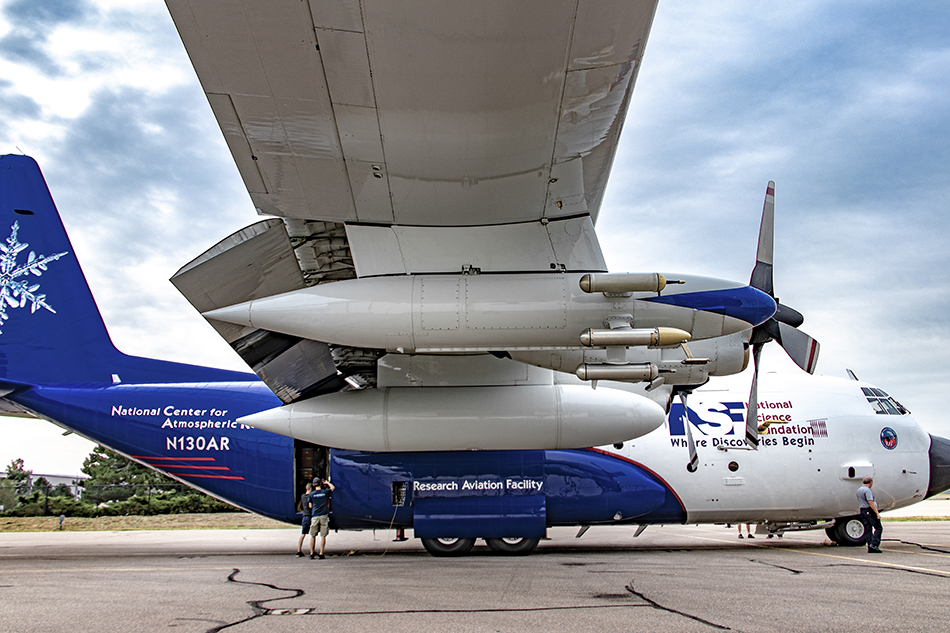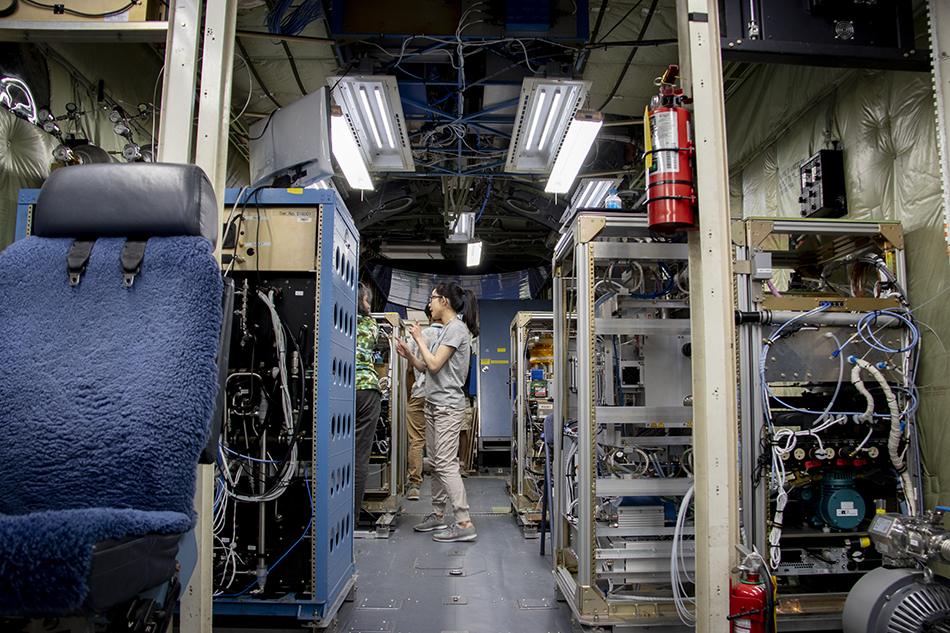Scientists fly into the heart of smoke plumes
Western wildfire field campaign studies impacts on weather, air quality, and climate
Jul 26, 2018 - by Ali Branscombe
Jul 26, 2018 - by Ali Branscombe

The NSF/NCAR C-130 research aircraft preparing for takeoff to Boise, Idaho, where the WE-CAN field campaign is based, to study western wildfire smoke. The National Science Foundation aircraft is managed and operated by the National Center for Atmospheric Research. (©UCAR. Image: Simmi Sinha. This image is freely available for media & nonprofit use.)
This summer, a specially equipped airplane is flying above wildfires in Idaho and surrounding western states in the most comprehensive field campaign to date that is focused on smoke plumes in the western United States.
Scientists from the National Center for Atmospheric Research (NCAR) and partner organizations are supporting a major research effort to study how smoke can impact weather, air quality, and climate. The project, called the Western Wildfire Experiment for Cloud Chemistry, Aerosol Absorption, and Nitrogen (WE-CAN), is primarily funded by the National Science Foundation, NCAR's sponsor. Additional support comes from the National Oceanic and Atmospheric Administration and NASA.
"Fires are a major contributor to air pollution, especially in the western United States," said Frank Flocke, an NCAR atmospheric scientist on the campaign. Western wildfires, which have been increasing in size and frequency, can produce high amounts of smoke that is hazardous to human health and ecosystems. Wildfire smoke can alter local weather patterns and can also have profound effects on air quality, even far downwind of its origin.
While the effects of wildfire smoke have been traced thousands of miles downwind, researchers still do not know the full impact of smoke as it travels and evolves in the atmosphere, which could leave some places vulnerable. "Studying the development of these fire plumes will lead to better predictions of the impact of wildfires on air quality, weather, and climate," said Flocke.
The field campaign, which is based in Boise, Idaho, includes the largest payload ever installed on the National Science Foundation's C-130 aircraft, which is managed and operated by NCAR. Scientists are focusing on three key areas:
"We’re following the transport and transformation of the plume of gases and aerosols emitted by wildfires to understand the chemical changes they undergo over time, how their properties might vary, and what their impacts are on human health and the environment," said Sylvia Edgerton, a program director in the Division of Atmospheric and Geospace Sciences at the National Science Foundation.
Until now, researchers studying wildfire smoke have had to use data from multiple locations and wildfires. WE-CAN aircraft operations will entail approximately 120 flight hours from July 22 to August 31, returning with a sweeping dataset for researchers to mine through for years.
"We are going to triple the amount we know about smoke chemistry in western wildfires in a few weeks," said Emily Fischer, the principal investigator of WE-CAN and a professor at Colorado State University. “When you look at the comprehensiveness of the payload we have, there have been very few sampling opportunities in the field with this kind of combination of instruments.”
An interdisciplinary team of scientists from NCAR, CSU, the University of Wyoming, the University of Washington, the University of Colorado Boulder, and the University of Montana are participating in the project.
The four-engine C-130 is equipped with state-of-the-art instrumentation to capture samples of the atmosphere during flight. A total of 26 sampling instruments inside and outside the aircraft will measure aerosols, cloud particles, trace gases, and radiation in the smoke plume. Many of the instruments are accompanied by a scientist on the flight to monitor the samples as they are collected.
NCAR’s Earth Observing Laboratory is responsible for carrying out safe flight operations in the vicinity of the wildfires targeted by WE-CAN and also provides many of the measurement systems deployed in the project.
"This is the largest payload we have ever installed, both in the volume of instruments and the electricity needed to power them," said NCAR's Pavel Romashkin, the C-130 project manager on the campaign. A payload this big comes with new challenges, the first among them being keeping the instruments, scientists, and crew from overheating, he said. Preventing that sometimes means maneuvering to higher altitudes, where the atmosphere is cooler, for a little while.
While their colleagues are trying to stay cool on the plane, a larger team of scientists are following the flights from the ground, not only monitoring incoming data, but keeping an eye on changing weather and satellite imagery of the wildfires. To account for rapid change, flight plans can be altered mid-flight to keep the aircraft flying within the plumes for as long as possible.
“We won’t know how vigorous the fire will be, or how windy it will be," said Flocke, who has worked on many field campaigns around the world. "Decision-making in the aircraft is critical."
